Reviews
Down
Dick Maas
USA / The Netherlands, 2001
Credits
Review by Leo Goldsmith and Jenny Jediny
Posted on 30 October 2007
Source Lions Gate VHS
Related articles
&t
Features Dark Passages: The Films of Dick Maas
Reviews The Lift
Reviews Amsterdamned
Reviews Silent Witness
Categories 31 Days of Horror
Leo’s thoughts:
Everything in America is proverbially bigger and evidently a good deal more cartoonish. One does not need The Shaft, Dick Maas’ American remake of his own 1983 Dutch film, The Lift, to realize this, but it is as good an example as any. Where Maas’ original film is dark, dour, and Dutch, the 2001 remake is as gawdy and plastic as it can be, featuring a central locale, the Millennium Building, that boasts about six times as many floors as its paltry 15-storey Dutch counterpart. The film itself is at least as many times as bombastic, as is apparent from its initial vault across the CGI Manhattan skyline, finally arriving at the famed tower, where a pair of opportunistic security guards spy on two bare-breasted prostitutes in a nearby building.
Even this opening splash of nudity is telling. It is of course analogous to the first scene in The Lift, in which a fat guy has sex with a woman in an elevator as it slowly tries to kill them (and their two friends, hanging out nearby). There is something oddly satisfying about the Dutch version of this scene, where a kind of weird crypto-mechanical vengeance is meted out upon a group of loud, profligate, and repellently rich people. In the American version, the nudity is gratuitous; it seems only to establish that these two slow-witted guards are members of a class that only gets to see high-class prostitutes from very far away. There is no perverse sense of justice in this scene, as in the earlier film, and when the elevator eventually (and inevitably) attacks them later in the film, we can’t help but feel a little bad for them. Even if the decapitation-by-lift is nicely realized (and an improvement on the identical scene in the 1983 version), it is less blackly humorous than it might be. Indeed, unlike in the earlier film, the American elevator’s very first set of victims is a group of pregnant women — not exactly the type of people, like the rich, whose torture or demise one can relish openly.
But Maas’ films are about extremes, and The Shaft seems to derive a good deal of childish pleasure in exploiting these. The elevator-induced decapitation is match-cut with the end of a cigar being lopped off; a blind man falls down an empty elevator shaft, pulling his recalcitrant seeing-eye dog along with him. Each of these has its analogue in Maas’ earlier version, but here they are magnified by a big, distorting Hollywood lens. And behind that lens is Maas, as comfortable with a cheesy remake of his own cheesy film as he might be behind the helm of an episode of The Young Indiana Jones Chronicles about Dracula. And he wields this lens with the sadistic glee of a little boy torturing insects.
Once again, we have an evil elevator, powered by a biologically based computer that was manufactured by a shadowy corporation, and once again, we have an average joe whose task it is to save the day. But unlike Huub Stapel’s Adelaar, Mark Newman (played by James Marshall, Twin Peaks’ own James Hurley) is not an embittered, world-weary family man but a cuckolded alcoholic former Marine. This transatlantic crossover of action movie archetypes - from wise-cracking everyman to ersatz Bruce Willis - goes mostly unnoticed throughout the film, but it makes all the difference in the film’s climax. Here, rather than Stapel bravely dismantling the lift’s oozing control box in workmanlike fashion, Mark lustily goes after the killer lift, vaulting up and down the elevator shaft gymnastically, dodging the National Guard in his pursuit of the gooey, biomechanical soul of the elevator. He then dispatches it with a missile launcher.
If this Hollywoodization of The Lift sounds typical of American remakes in general, it should be some consolation that everyone involved - and most of all Maas - seems to be having fun and isn’t working too hard. The look of the film has a perfunctory gloss, but the actors in the frame all seem to think they’re in a sitcom. Onscreen is a virtual clearinghouse of B-movie character actors: Dan Hedaya as a thoroughly unlikely, well-dressed, cigar-lopping police chief; Total Recall’s Michael Ironside (who seems to have bad luck with elevators) as a mad scientist; and - because it is illegal to make a B-movie in this country without him - Ron Perlman. And then of course there is the principle reason that most people have inadvertently rented this movie: Naomi Watts. Making The Shaft the same year as Mulholland Dr. (which seemed to her the bigger gamble at the time?), Watts is a good deal more Betty here than Diane, a sneaky reporter who dresses in shiny macs and connives her way into and out of situations with that blindingly sunny smile that Watts has since trademarked. Not missing a beat, the American DVD distributor has wisely capitalized on Watts’ subsequent stardom: the design of their packaging matches almost exactly that of Watts’ other horror remake, The Ring. A dirty trick, perhaps, that will doubtless ensure a steady revenue from accidental drunken rentals for many years to come. Somehow I don’t think Maas would mind in the least.
Jenny’s thoughts:
Filmmaking students should study Dick Maas’ endless and always inventive use of the match cut; in The Shaft, the Americanized version of Maas’ original take on elevator terror, The Lift, the initial victims are a cluster of pregnant women induced into sudden labor after a rapid floor drop, followed by the claustrophobia and heat of a stuck elevator. Finally prying open the elevator doors, the building’s security guards are aghast by what must be a floor saturated with amniotic fluid, an opportunity Maas takes to cut us over to a greasy, egg-splattered stove top in a local diner. The “Nudge Nudge” take on horror in The Shaft is effortlessly, and as already noted, often queasily delivered by Maas.
While Maas successfully establishes the ease at which elevators could terrorize in such a vertical city as New York, there are far more crass visual ploys than moments of suspense, particularly for viewers familiar with The Lift. A number of shots and sequences in The Shaft are directly taken from, or at least inspired by De Lift, but the noticeable alterations reflect a desire to make the material both familiar and more appealing to audiences this side of the pond. The metropolis fascinates Maas; Amsterdam is not merely the setting in many of his films, but as vital to the action as any character (and occasionally even more relevant). New York City is as prominently featured in The Shaft, and filled with the obvious stereotypes one might immediately associate with the Big Apple; nosy female reporters who prefer pink pleather to a professional suit, thick accents, rude construction workers, and throngs of tourists all attempting to crowd into the misbehaving elevators at The Millennium Building, a barely veiled stand-in for The Empire State Building.
Perhaps even more familiar to American audiences is the somewhat amped-up violence; Maas discards the seedy sex scenes that often unnecessarily appear in his Dutch features (minus a brief Peeping Tom moment from the top of the skyscraper) in favor of extra blood and a military subplot that brings in the big guns for the final scenes. Maas also plays off the attachment American audiences have for man’s best friend, as a poor seeing-eye dog is now included in an unfortunate encounter between his blind owner and an empty elevator shaft; the scene, which plays for laughs in De Lift minus the dog, now seems an intentional set-up to goad sensitive pet lovers (especially as Maas cheekily refers back to it in a later scene at a press conference, where a reporter adamantly asks about the dog, not the human victim).
Our heroes, blank faced elevator repairman Mark (Twin Peaks’ James Hurley) and trashy, NY Post inspired reporter Jennifer Evans (Naomi Watts, thankfully in her last role before the release of Mulholland Dr.) are the unfortunate weak links in Maas’ elevator binge, but with little consequence, as they function as well as any character in the Maas plot wheel, minus the humor of a Huub Stapel. Ultimately The Shaft is far more noteworthy for the shrieking widow of a murdered elevator repairman, Brunhilda neglecting to mind the tots at the top of The Millennium Building, and the pervy blind man who should have been more mindful of his dog’s barking—all far more victim to Maas’ consistently amusing bad humor than any killer elevator.
More 31 Days of Horror
-

Alien
1979 -
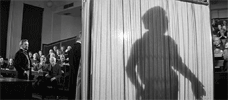
The Elephant Man
1980 -
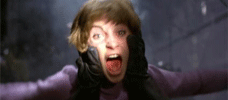
My Bloody Valentine
1981 -
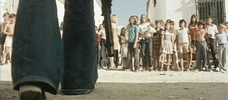
Who Can Kill a Child?
1976 -
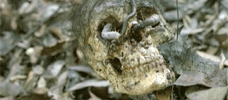
Cannibal Holocaust
1980 -
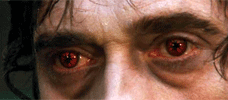
Let Sleeping Corpses Lie
1974 -

John Carpenter’s Vampires
1998 -

Jaws 2
1978 -

A Warning to the Curious
1972 -

Wolf
1994 -
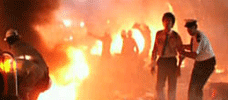
The Survivor
1981 -

Cannibal Ferox
1981 -
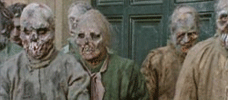
The Nights of Terror
1981 -
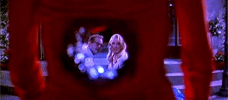
Death Becomes Her
1992 -

Alice, Sweet Alice
1976 -

Body Double
1984 -
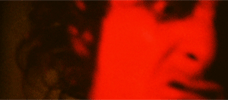
Invocation of My Demon Brother
1969 -
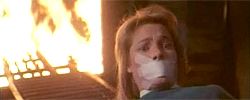
Phantasm II
1988 -
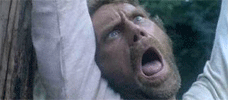
Emanuelle and the Last Cannibals
1977 -

The Wicker Man
1973 -
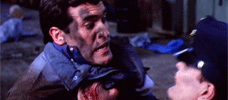
Maniac Cop
1988 -
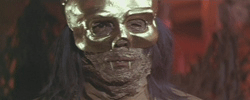
The Legend of the 7 Golden Vampires
1974 -
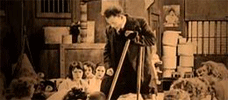
The Penalty
1920 -

Boxing Helena
1993 -

Chew on This
2005 -

Night of the Creeps
1986 -

Night of the Lepus
1972 -
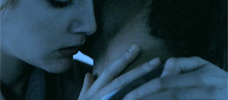
Near Dark
1987 -

Army of Darkness
1992 -
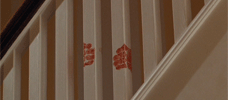
The Brood
1979 -
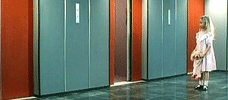
The Lift
1983 -

Amsterdamned
1988 -
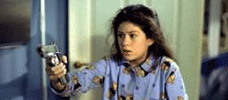
Silent Witness
1999 -
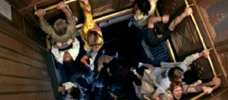
The Shaft
2001
We don’t do comments anymore, but you may contact us here or find us on Twitter or Facebook.



